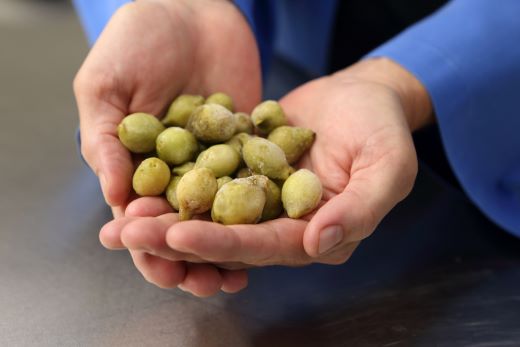
A Grains Research and Development Corporation (GRDC) investment has revealed that the level of seed dormancy in barley grass populations on South Australia’s Eyre Peninsula is the highest in the low rainfall regions of southern Australia, making it a particularly challenging weed for growers to control.
Agronomists from Western Australia, SA, Victoria and New South Wales collected 146 random barley grass samples in 2018, which were sent to the University of Adelaide’s Weed Science Group to test for dormancy and herbicide resistance.
University of Adelaide Associate Professor – Weed and Crop Ecology, Gurjeet Gill, said the level of dormancy in EP barley grass populations was a clear stand-out from this research.
“When moisture was applied in autumn as part of our tests, the barley grass populations from NSW came up very quickly – 50 per cent germination was achieved within an average of five to seven days,” he said.
“In contrast, populations from the EP were much more dormant and took an average of 33 days to achieve 50 per cent germination, nearly seven times longer than the NSW populations.
“This means pre-seeding knockdown weed control is likely to be less effective on barley grass populations with higher seed dormancy.”
Dr Gill said there were also some large variations between barley grass populations collected in different areas of the EP.
“One lower dormancy population from the EP took 13 days to achieve 50 per cent germination, compared with a higher dormancy population from the same area where it took 46 days,” he said.
“This tells us there are large differences between populations, which is the result of these barley grass populations evolving over time as farming practices change, particularly with the shift towards continuous cropping.
“The complicating factor with barley grass is that it sheds its seeds too early for harvest weed seed control and it is hard to spray top because it is early maturing.
“Barley grass can shed up to 90 per cent of its of seed by the time a crop can be harvested.”
While some mixed farmers value barley grass as a feed source, it can also have implications with seeds making their way into the fleece, skin and eyes of livestock.
With many growers turning to herbicides in an effort to manage barley grass, another part of the research has been looking into how common herbicide resistance is in the weed.
Of the 146 random samples collected, five per cent of populations showed resistance to Group A herbicides and 21 per cent showed resistance to Group B herbicides. None of the samples collected showed resistance to glyphosate or paraquat.
Additional barley grass populations were targeted from grower paddocks on the EP in 2019 and tested for resistance in 2020. Group A resistance was confirmed in 17 out of 22 populations, or 77 per cent.
As most of these populations were suspected of Group A resistance, the higher level of resistance detected than in the random survey of 2018 was not surprising, according to Dr Gill.
Resistance to Group A herbicides was also confirmed in some barley grass samples received from the Mid North and Upper North of SA.
Dr Gill warned growers against complacency in the use of these herbicides.
Research and field observation confirm there is significant variability in barley grass populations.
“Understanding how different barley grass populations behave is key to their management,” he said.
“In some areas, farmers have found that introducing wheat where they can use pyroxasulfone herbicide means they can use a different chemistry before going into a pasture phase, where good grazing management can be utilised to keep barley grass populations at a low level.
“For continuous croppers, rotating crops and herbicide groups is key in staying on top of barley grass.”






